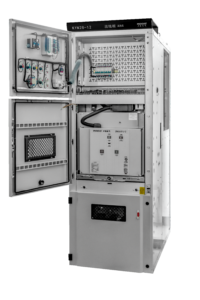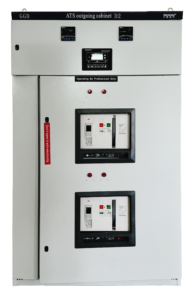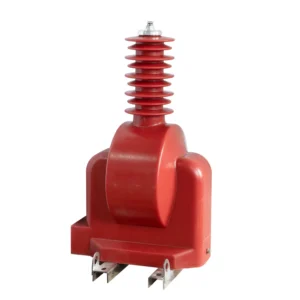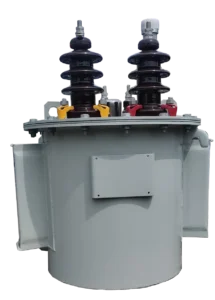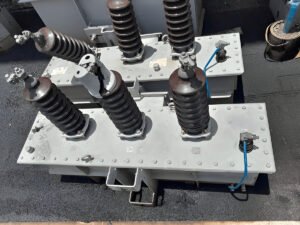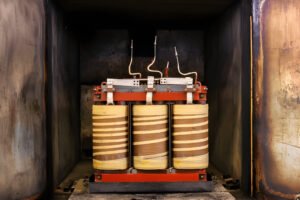
What Is Oil-Immersed Distribution Transformer
An oil-immersed distribution transformer is a type of electrical transformer that uses oil as an insulating and cooling medium. These transformers are designed to step down the voltage from high levels used in transmission lines to lower levels suitable for distribution to homes and businesses. The oil serves two primary purposes: it acts as a coolant to dissipate the heat generated by the electrical components during operation, and it provides insulation between the various components within the transformer.
The oil used in these transformers is typically mineral oil, but other types like silicone oil or ester-based oils can also be used depending on specific requirements. The transformer’s core and winding are submerged in the oil, which helps improve the transformer’s efficiency and extends its operational lifespan by maintaining optimal temperature conditions.
How Oil-Immersed Distribution Transformers Work
Oil-immersed distribution transformers function by using transformer oil as both an insulating and cooling medium. This type of transformer consists of primary and secondary windings, made from conductive wire, wrapped around a magnetic core. When electrical current flows through the primary winding, it creates a magnetic field that induces a voltage in the secondary winding, effectively transferring electrical energy from the primary to the secondary circuit.
The oil in these transformers performs dual roles. Firstly, it insulates the internal components, preventing electrical discharges between different sections. The oil also acts as a coolant, absorbing the heat generated by the core and windings during operation. This heat is then dissipated through the transformer’s tank walls or via radiators attached to the tank, maintaining optimal operating temperatures and preventing overheating.
The transformer’s construction allows for efficient voltage regulation. When the load on the transformer changes, the tap changer, a mechanical device, adjusts the winding configurations to maintain a stable output voltage. This ensures consistent power delivery, even with variable demand.
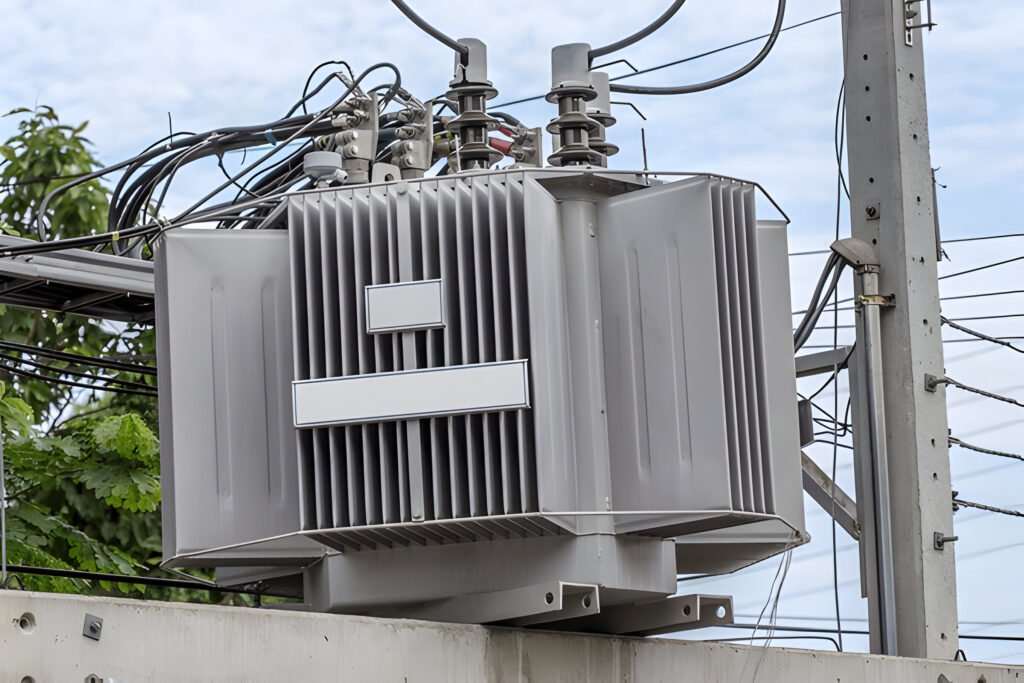
Components of Oil-Immersed Distribution Transformers
- Core: The core is typically constructed from high-grade silicon steel laminations, which are stacked together to form a magnetic circuit. This component is crucial in minimizing energy losses and facilitating efficient magnetic flux linkage between the primary and secondary windings.
- Windings: These consist of copper or aluminum conductors, insulated with materials capable of withstanding high temperatures. The windings are responsible for transforming voltage levels, operating either as primary (input) or secondary (output) circuits.
- Insulating Oil: The oil serves two primary functions: it acts as an insulator and a coolant. It surrounds the core and windings, providing thermal management by dissipating heat generated during operation and offering electrical insulation to prevent short circuits.
- Tank: The tank is a robust enclosure that houses the core and windings immersed in oil. It is designed to endure both internal pressures and external environmental conditions, often coated with anti-corrosive paint to enhance durability.
- Buchholz Relay: This safety device is installed in the oil-immersed transformer to detect gas accumulation caused by internal faults. It provides an early warning by triggering alarms or circuit breakers to prevent catastrophic failures.
- Conservator: A conservator is a cylindrical container mounted above the main tank, connected by pipes. It compensates for the expansion and contraction of oil due to temperature fluctuations, ensuring an adequate oil level is maintained.
- Radiators: Attached to the tank, radiators enhance heat dissipation. Their design, often with fins or corrugated surfaces, increases the surface area for efficient cooling of the transformer oil.
- Tap Changer: This component allows for voltage adjustments by changing the turns ratio of the windings. Manual or automatic tap changers can adjust the output voltage to maintain stability under varying load conditions.
- Breather: The breather controls the moisture content in the air entering the conservator. It contains silica gel or a similar desiccant that absorbs moisture, ensuring that the oil remains dry and maintains its insulating properties.
- Bushings: Bushings provide insulated connections for the windings to external circuits. They facilitate safe entry and exit of electrical conductors, maintaining the insulation between live parts and the grounded tank.
Types of Oil-Immersed Distribution Transformers
Mineral Oil-Immersed Transformers
Mineral oil-immersed transformers are the most prevalent type of distribution transformers used worldwide, renowned for their effective cooling and insulation properties. These transformers are filled with highly refined mineral oil that serves a dual purpose: insulating the windings and conducting heat away from the transformer core and coils, thereby dissipating it through radiator fins or cooling fans.
Mineral oil, derived from crude petroleum, is chosen for its excellent dielectric strength and thermal conductivity. It acts as a protective barrier, reducing the risk of electrical faults by preventing arcing and corona discharges within the insulation system. The oil’s ability to maintain its properties over a wide range of temperatures further enhances the reliability of mineral oil-immersed transformers in various environmental conditions.
A critical consideration in the use of mineral oil is its flammability. While mineral oil is highly effective as an insulator and coolant, its combustible nature necessitates stringent safety measures, especially in densely populated areas or environments with strict fire safety standards. To mitigate these risks, transformers are often equipped with Buchholz relays and other protective devices that can detect gas accumulation or pressure changes triggered by electrical faults.
Silicone Oil-Immersed Transformers
Silicone oil-immersed transformers are an important variant in the realm of distribution transformers, distinguished by their use of silicone-based insulating fluid. These transformers are preferred in applications where enhanced safety and environmental compliance are paramount. Silicone oil offers several advantages over conventional mineral oil, including superior thermal stability and a higher flash point, which contributes to reduced fire risk. This aspect is particularly critical in densely populated areas or in indoor installations where fire safety is a significant concern.
Silicone oil has excellent dielectric properties, which ensure effective insulation and reliable performance under varied operational conditions. It possesses a high thermal conductivity, which aids in efficient heat dissipation, thereby extending the operational life of the transformer. Moreover, silicone oil maintains its viscosity over a wide temperature range, ensuring consistent performance in both cold and hot climates.
Another key benefit of silicone oil is its biodegradability and non-toxicity, making it a more environmentally friendly option compared to mineral oil. This aligns with the growing emphasis on sustainable and green technologies in the engineering sector. Furthermore, silicone oil-immersed transformers exhibit superior moisture tolerance, reducing the risk of insulation breakdown due to water contamination.
Despite their advantages, silicone oil-immersed transformers tend to be more expensive than their mineral oil counterparts. This cost consideration is often offset by the long-term benefits of reduced maintenance requirements and increased safety margins. Their application is particularly advantageous in scenarios requiring minimal environmental impact and high safety standards, such as in hospitals, data centers, and urban infrastructures.
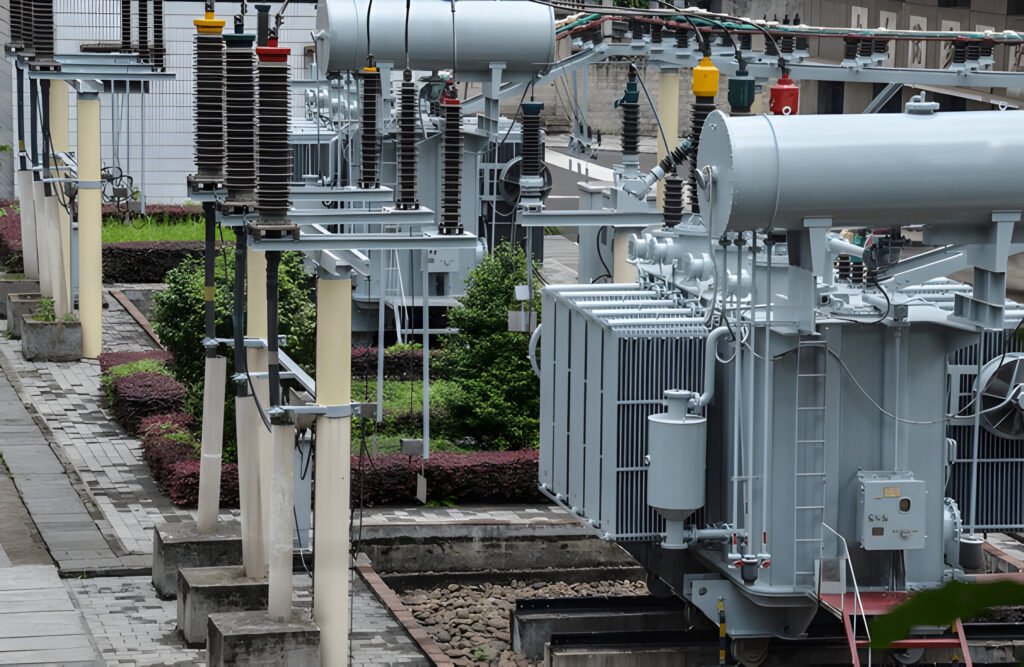
Synthetic Ester Oil-Immersed Transformers
Synthetic ester oil-immersed transformers offer a modern alternative to traditional mineral oil transformers, boasting enhanced environmental and safety features. Synthetic esters are engineered fluids designed to provide superior insulation and cooling properties. These esters are non-toxic, biodegradable, and have a higher fire point compared to mineral oils, typically exceeding 300°C. This significantly reduces the risk of fire hazards, making them suitable for installations in densely populated areas or locations with stringent safety regulations.
One of the primary advantages of synthetic ester oil is its excellent moisture tolerance. Unlike mineral oils, synthetic esters can absorb and retain more moisture without compromising the dielectric properties of the transformer. This characteristic extends the operational life of the transformer and reduces the need for frequent maintenance. Additionally, synthetic esters have a high oxidation stability, which prevents the formation of sludge and acids, further ensuring the longevity of the transformer.
From an environmental perspective, synthetic ester oils are a favorable choice due to their biodegradability. In the event of a leak, these fluids break down naturally, minimizing environmental impact and aligning with sustainability goals. This property makes them particularly advantageous for use in environmentally sensitive areas.
While the initial cost of synthetic ester oil-immersed transformers may be higher than their mineral oil counterparts, their extended life span, reduced maintenance needs, and increased safety features often result in lower total cost of ownership over time.
Natural Ester Oil-Immersed Transformers
Natural ester oil-immersed transformers are an advanced type of distribution transformer that utilize natural ester fluids as the insulating and cooling medium. These fluids are derived from renewable vegetable oils, such as soybean or sunflower oil, making them an environmentally friendly alternative to traditional mineral oils. The use of natural esters provides several advantages, particularly in terms of sustainability and safety, which are crucial considerations in modern electrical infrastructure.
One of the primary benefits of natural ester oils is their biodegradability. Unlike mineral oils, natural esters break down naturally in the environment, reducing the risk of contamination in case of leaks. This characteristic makes them an ideal choice for installations located near sensitive ecological areas or water supplies. Furthermore, their high fire point, often exceeding 300°C, enhances the safety profile of transformers, as it significantly reduces the risk of fire-related incidents.
In addition to their ecological advantages, natural ester oils offer improved dielectric properties. These fluids can absorb more moisture without compromising their insulating capabilities, which extends the operational life of the transformer. This moisture tolerance is particularly beneficial in humid environments, where traditional insulating fluids may degrade more rapidly.
From a performance perspective, natural ester oil-immersed transformers are designed to operate efficiently under various load conditions. Their ability to dissipate heat effectively ensures reliable performance and minimizes thermal aging of the insulation system.
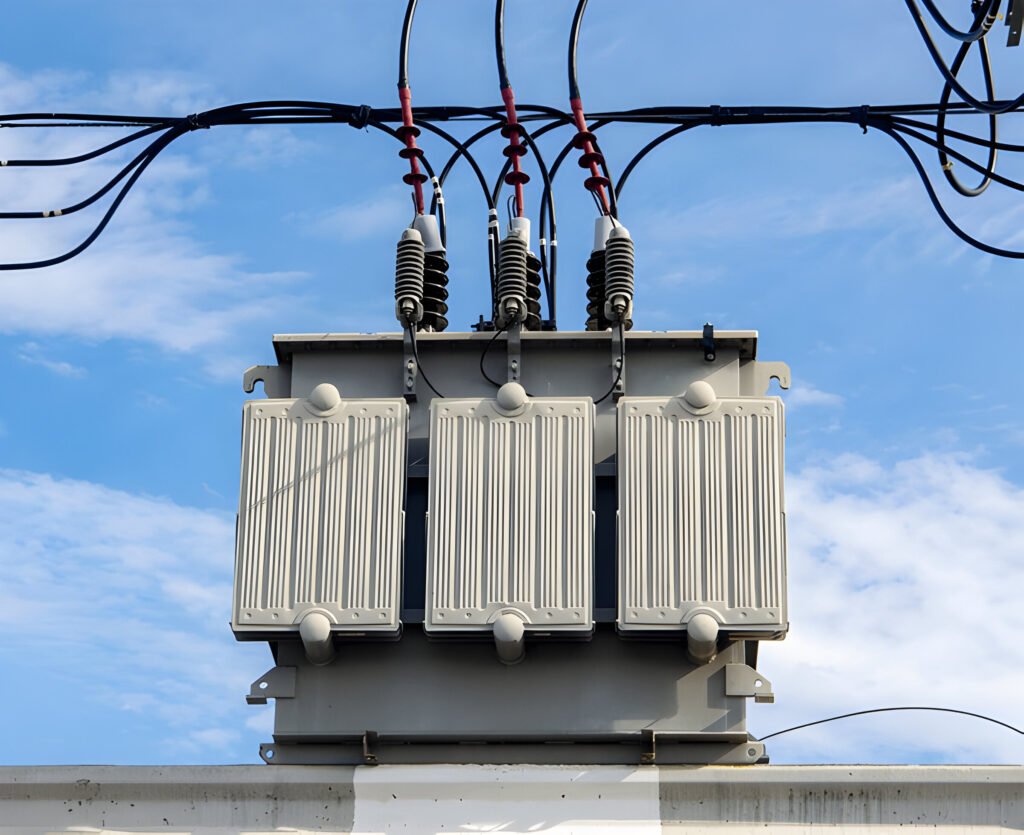
Advantages of Oil-Immersed Distribution Transformer Over Dry-Type Transformers
- Higher Efficiency: Oil-immersed distribution transformers typically offer higher efficiency compared to dry-type transformers. The oil enhances insulation and cooling, reducing energy losses and improving overall performance.
- Better Cooling Capabilities: Oil serves as both an insulator and a coolant. It effectively dissipates heat generated during operation, allowing transformers to handle higher loads without overheating, thus extending their lifespan.
- Cost-Effectiveness: Generally, oil-immersed transformers are more cost-effective in terms of initial purchase and long-term maintenance. The efficient cooling and insulation provided by oil minimize the need for additional cooling systems, reducing operational costs.
- Higher Overload Capacity: These transformers can manage temporary overloads more effectively due to their superior cooling system. This capability ensures reliable performance during peak demand periods.
- Durability and Longevity: The oil in these transformers helps protect internal components from moisture and contaminants, enhancing durability. The robust construction ensures a longer service life, making them a reliable choice for various applications.
- Superior Insulation: Oil provides better dielectric strength compared to air, which is used in dry-type transformers. This results in enhanced electrical insulation, reducing the risk of electrical faults and ensuring safer operation.
- Reduced Noise Levels: Oil-immersed transformers generally produce lower noise levels due to the damping effect of the oil and the enclosed design, making them suitable for installation in residential or noise-sensitive areas.
- Versatility in Installation: These transformers are suitable for outdoor installations, offering more flexibility in terms of placement compared to dry-type transformers that are often limited to indoor environments.
Disadvantages of Oil-Immersed Distribution Transformer Over Dry-Type Transformers
- Potential for Oil Leaks: Oil-immersed transformers are prone to oil leaks, which can lead to environmental contamination. This requires regular maintenance to prevent and manage spills, making them less environmentally friendly compared to dry-type transformers.
- Fire Hazard: The presence of oil increases the risk of fire, especially if the transformer overheats or if there is an electrical fault. This necessitates additional safety measures, such as fire suppression systems, which add to the operational costs.
- Heavier and Bulkier Design: Oil-immersed transformers tend to be heavier and bulkier due to the oil tank and associated components. This can lead to higher transportation costs and require more space for installation and operation.
- Higher Maintenance Requirements: This includes monitoring the oil quality for contaminants and breakdown products, which can increase maintenance costs over time.
- Limited Indoor Use: Due to fire risk and potential oil leaks, oil-immersed transformers are generally not preferred for indoor applications. This limits their use in settings where space is constrained or where environmental and safety regulations are stringent.
- Lower Efficiency at High Altitudes: Oil-immersed transformers may experience reduced efficiency at higher altitudes due to decreased cooling capacity. This can impact performance and longevity, requiring additional cooling solutions or design considerations for use in such environments.
Applications of Oil-Immersed Distribution Transformers
- Residential Areas: Oil-immersed distribution transformers are commonly used in residential neighborhoods. Their primary function is to reduce the high voltage from power lines to a lower voltage suitable for household use.
- Industrial Facilities: In industrial settings, these transformers are essential for powering heavy machinery and equipment that require significant electrical energy.
- Commercial Complexes: Shopping malls, office buildings, and other commercial establishments rely on oil-immersed transformers to ensure a consistent power supply. These transformers help manage the power demands of HVAC systems, lighting, and electronic devices, maintaining operational efficiency and safety.
- Urban and Rural Electrification: These transformers facilitate the efficient distribution of electricity over long distances, helping to bring reliable power to remote and developing regions.
- Renewable Energy Integration: Oil-immersed distribution transformers are utilized in renewable energy projects, such as wind farms and solar power plants. They convert the generated power to appropriate levels for grid distribution, supporting the integration of sustainable energy sources into the existing power grid.
- Public Utilities: In public utilities, these transformers ensure the delivery of electricity to street lighting, public transportation systems, and other municipal services.

Cooling Methods for Oil-Immersed Transformers
Natural Oil Cooling (ONAN)
Natural Oil Air Natural (ONAN) cooling is a passive method where the transformer’s insulating oil circulates naturally due to convection currents. As the oil heats up, it rises to the top of the tank and cools down when it comes into contact with the tank walls, subsequently sinking to the bottom. This cycle continues without external assistance, making ONAN cooling efficient for smaller transformers where heat dissipation requirements are lower.
Forced Oil Cooling (OFAF)
For larger transformers, Forced Oil Air Forced (OFAF) cooling is often utilized. This method uses pumps to actively circulate the oil within the transformer, enhancing the heat transfer process. Fans are also employed to increase airflow over the radiator surfaces, further facilitating heat dissipation. OFAF cooling is highly effective in maintaining lower operational temperatures, crucial for larger units with higher power ratings.
Forced Oil and Water Cooling (OFWF)
In environments where air cooling is insufficient, Forced Oil Water Forced (OFWF) cooling provides an alternative solution. This method involves circulating transformer oil through heat exchangers where water is used as a secondary coolant. The heat absorbed by the water is then carried away from the transformer. OFWF cooling is typically deployed in situations where the ambient temperature is high or space is limited, and it offers an efficient means of managing the thermal load.
Directed Oil Cooling (ODAF)
Directed Oil Air Forced (ODAF) cooling is an advanced method where the oil flow is strategically directed to specific hot spots within the transformer. This targeted approach ensures that areas generating the most heat receive enhanced cooling. Pumps are used to direct oil flow, while fans assist in dissipating heat from radiators. ODAF cooling is particularly beneficial for transformers with irregular heat distribution, ensuring uniform temperature control.
What Is the Difference between Oil Filled and Dry Type Transformers
Cooling Method
Oil-filled transformers use mineral oil or synthetic fluids as a coolant and insulator. The liquid circulates within the transformer, dissipating heat effectively. Dry-type transformers, on the other hand, rely on air or gas for cooling and insulation. This fundamental difference in cooling method impacts their performance and applications.
Dielectric Strength
Oil-immersed transformers have superior dielectric strength due to the insulating properties of the oil. This allows them to handle higher voltages more efficiently. Dry-type transformers, while capable of handling high voltages, generally have lower dielectric strength compared to their oil-filled counterparts.
Size and Weight
Oil-filled transformers are typically more compact and lighter for the same power rating. The efficient cooling properties of oil allow for a smaller design. Dry-type transformers often require more space and are heavier due to the need for additional insulation and cooling components.
Maintenance Requirements
Dry-type transformers generally require less maintenance as they don’t need oil monitoring or replacement. Oil-filled transformers require regular oil testing, filtering, and occasional oil changes to maintain optimal performance. However, the maintenance of oil-filled transformers contributes to their longer lifespan.
Environmental Considerations
Dry-type transformers are often considered more environmentally friendly as they eliminate the risk of oil leaks or spills. Oil-filled transformers, if not properly maintained, can pose environmental risks. However, modern oil-filled transformers use biodegradable oils to mitigate these concerns.
Noise Levels
Oil-filled transformers typically operate more quietly than dry-type transformers. The oil helps dampen vibrations, resulting in lower noise emissions. Dry-type transformers may produce more audible noise due to the lack of liquid insulation.
Installation Location
Dry-type transformers are often preferred for indoor installations, especially in buildings, due to their reduced fire risk. Oil-filled transformers are more commonly used outdoors or in dedicated transformer rooms due to fire safety considerations and potential oil leakage.
Overload Capacity
Oil-filled transformers generally have better overload capacity due to the superior cooling properties of oil. They can handle temporary overloads more effectively than dry-type transformers, which have more limited heat dissipation capabilities.
Initial Cost vs. Long-term Cost
Dry-type transformers typically have a higher initial cost but lower long-term maintenance expenses. Oil-filled transformers often have a lower upfront cost but may require more ongoing maintenance, impacting their total cost of ownership over time.
FAQs
How often should the oil in a transformer be replaced?
The oil in a well-maintained transformer can last for decades. However, regular oil testing and analysis should be conducted to monitor its condition. Oil replacement is typically required when the oil’s insulating properties have deteriorated significantly.
What is the typical lifespan of an oil-immersed distribution transformer?
With proper maintenance and under normal operating conditions, an oil-immersed distribution transformer can last for 25 to 30 years or more.

